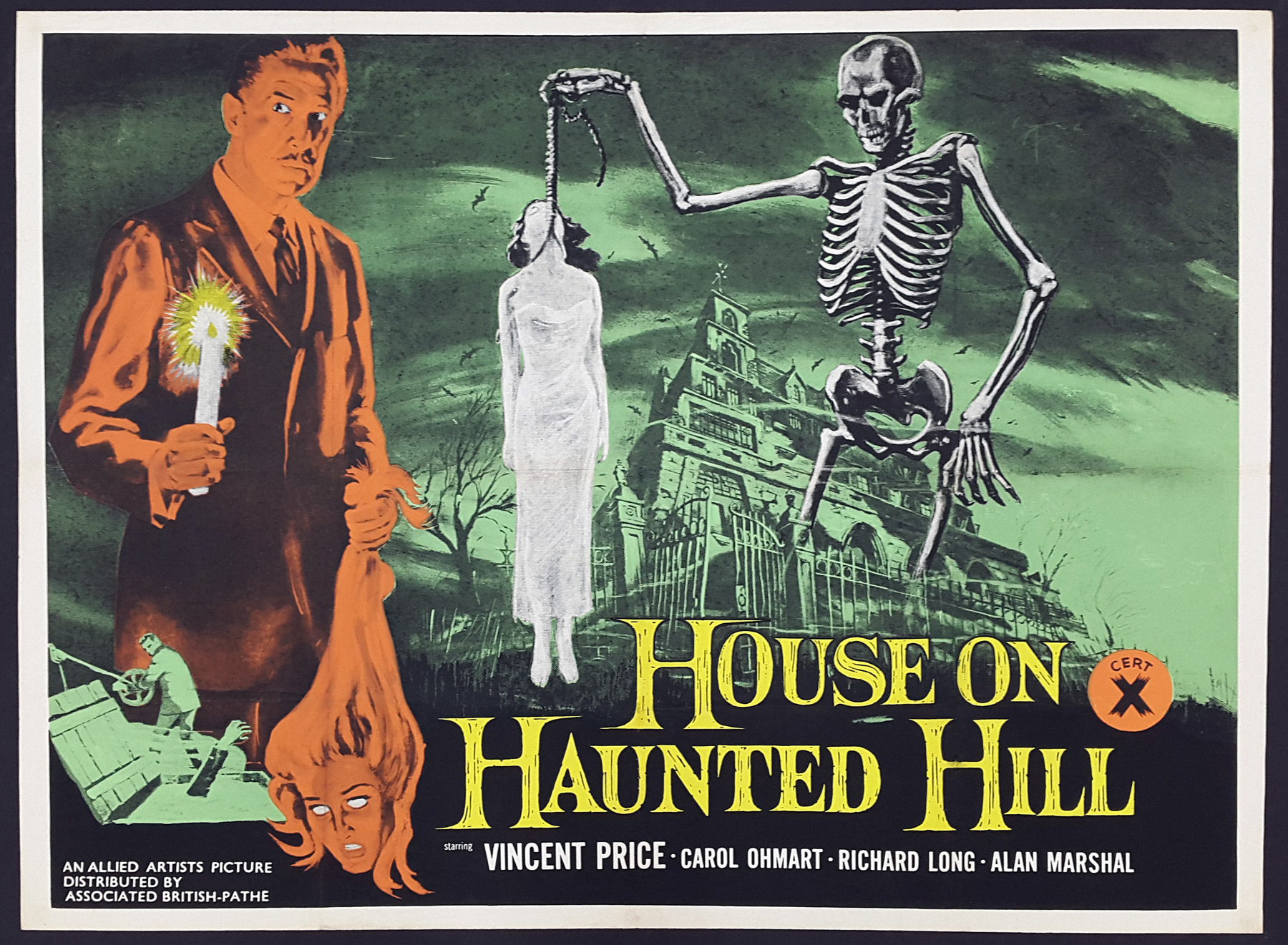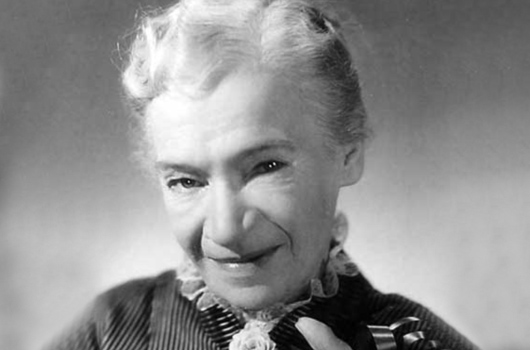Pages
▼
Monday, December 24, 2018
Friday, December 21, 2018
TCM Movie: Scrooge (A Christmas Carol) (1951)
David Lean's production of "Great Expectations" (1946) is truly at fault for the burst of all following adaptations of Charles Dickens's classics. It would be fair to assume that "many [...] would count [Great Expectations] among the greatest British films ever made." (A Christmas Carol and Its Adaptations: A Critical Examination of Dickens's Story on Screen and Television. Guida, Fred. 1999) The boom continued with Alberto Cavalcanti's "Nicholas Nickleby" (1947) which was neatly tucked between Lean's "Great Expectations" and his next adaptation in "Oliver Twist." It would only be a matter of time until someone on either side of the pond would end up making "A Christmas Carol" ... again.
The holiday classic would not be the first or last time it would be adapted having reached as far back as 1901 with 7 more adaptations until Henry Edwards's talkie "Scrooge" (1935) which starred a veteran to playing the shrewd money lender, Seymour Hicks who also starred in one of the silents back in 1913. Three years later, MGM sanitized the Christmas Eve ghost story down to "family film" fanfare with Reginald Owen in the lead. But it had been 13 years since the last British-made "A Christmas Carol" and it was indeed time for Renown Studios.
Under the original title of "Scrooge," director and producer Brian Desmond Hurst found his actor in the then beloved stage and screen actor Alastair Sim. "The Scottish born Sim was fifty-one years old when the film was made, but in keeping with its naturalistic approach, no drastic attempt was made to make him look older as MGM had done with Reginald Owen. Instead, one of the screen's great comic character actors was essentially allowed to be himself. With a wonderfully expressive face and eyes, a rich mellifluous voice, and an almost describable penchant for droll wit, irony and eccentricity, Sim was both a unique personality and a fine actor [...] As brilliant as his performance is, however, it never dominates the film. Instead, it is seamlessly integrated into a near perfect distillation of the story." (A Christmas Carol and Its Adaptations: A Critical Examination of Dickens's Story on Screen and Television. Guida, Fred. 1999)
It is popular knowledge that post-WW2 America had created an even more zealous industry in the Christmas holiday which can only be best explained for how poorly this classic holiday ghost story did in the box office. It also probably hurt that "Scrooge" now "A Christmas Carol," in the states, premiered November 28th, 1951 just outside of the holiday window and to very mixed reviews. Bosley Crowther of The New York Times relished throwing the MGM adaptation under the bus through "A Christmas Carol" as "not conceal[ing] Dickens' intimations of human meanness with an artificial gloss. The usual conceptions of Christmas in terms of puddings and flowing bowls are not visualized in this picture to any conspicuous degree. Even the gay board of the Cratchits is kept on a modest scale, and cheerfulness rather than foodstuffs is apparent in the home of nephew Fred." "In short, what we have is this rendition of Dickens' sometimes misunderstood "Carol" is an accurate comprehension of the agony of a shabby soul. And this is presented not only in the tortured aspects of Mr. Sim but in the phantasmagoric creation of a somber and chilly atmosphere." Variety, however, was even less forgiving and hated the film with a, according to Guida, review that "must surely rank as one of the most dunderheaded reviews of all time." Alastair Sim was said to "stalk[...] through the footage like a tank-town Hamlet." But overall, Variety found it as "a grim thing that will give tender-aged kiddies viewing it the screaming-meemies, and adults will find it long, dull and greatly overdone."
"A Christmas Carol" will be shown on Turner Classic Movies December 23rd, 10:00 EST/9:00 CST
Happy Yule, dear readers!
Wednesday, December 19, 2018
Monday, December 17, 2018
Thursday, December 13, 2018
TCM Movie: 3 Godfathers (1949)
According to Hollywood legend, the well known and loved Western actor Harry Carey died at the age of 69 from a Black Widow spider bite at his home in Brentwood. Other sources believe he passed away of lung cancer or coronary thrombosis, having smoked cigars for most of his adult life. Carey had acted in two prior iterations of the Peter B. Kyne novel "3 Godfathers" (1916) as well as the John Ford directed "Marked Men" in 1919 which is now considered lost.
"Marked Men" was still owned by MGM who Ford still had major issues with when it came to Louis B. Mayer. MGM's policies towards independent directors was not the easiest for mavericks like Ford and a little before the film began to make its roots, that was when Carey, a friend and mentor to Ford, had passed away. "3 Godfathers" would be an homage of the film he had once made in technicolor. The homage went as far as to opening the film eulogizing the actor as the "bright star of the early western sky" as well as opening on a wide shot of a lone rider (Cliff Lyons) silhouetted and sitting on the horse like Carey had done in the many Western films he had made. Ford even cast Carey's son, Harry Carey Jr., as "The Abilene Kid," one of the "three wise men" who are resorted to take care of an orphaned newborn boy after its mother had died in childbirth.
But "Uncle Jack," as Jr. had known him as his whole life, was not very nice to him throughout the shooting. One instance involved Ford picking up a rock and "lobbed it straight at Carey's face. The actor ducked, and the rock landed square in Pedro Armendariz's stomach." Ford did let it be known that Carey was "going to hate my guts before the picture is over." If he wasn't verbally bemoaning that "we should have gotten Audie Murphy!", Ford would have had his honorary nephew bend over and kick him hard for some mistake Carey had made during a scene. For as much abuse Jr. had been put through, Ford made sure he wouldn't be on set when shooting the beginning shot that eulogized his father with his father's favorite horse, Sonny. "Once Carey's final scenes were shot, Ford demanded him to go home. Carey refused, thinking Ford was just being mean, but Ford won out in the end. [...] Ford knew that watching the scene shot would be too much for the young Carey, so he shielded Carey from it, as a doting "uncle" would a "nephew."" ("3 Godfathers" - 1949 - Articles - TCM.com")
The John Wayne-helmed film was released December 1, 1948 and ended up #62 on the Top-Grossers of 1949, earning 2,078,000 in the U.S. and Canada and 763,000 overseas. Bosley Crowther at the New York Times praised Ford's cinematography as "film[ing] it so that the characters and gritty atmosphere that slosh from the screen great warm sluices of grandeur and emotion." Wayne was considered "wonderfully raw and ruticous," Armendariz "colorful [with a] a real note of pathos," and Harry Carey Jr., for all of the abuse he was put through, as "touching."
3 Godfathers will air on TCM December 15 at 9:30 EST/8:30 CST
Tuesday, December 11, 2018
7 Times Actresses Were Ultimate Beauty Goals in Christmas Movies
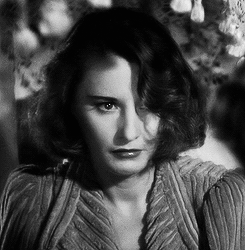 |
| Barbara Stanwyck in "Remember the Night" (1940) |
 |
| Marjorie Reynolds in "Holiday Inn" (1942) |
 |
| Myrna Loy in "The Thin Man" (1934) |
 |
| Rosemary Clooney in "White Christmas" (1954) |
 |
| Simon Simone in "The Curse of the Cat People" (1944) |
 |
| Vera Ellen in "White Christmas" (1954) |
 |
| Shirley Temple in "I'll See Seeing You" (1944) |
Friday, December 7, 2018
Wednesday, December 5, 2018
Sunday, November 25, 2018
Sunday, November 4, 2018
Remake This: "Stage Door" (1937)
"Stage Door," a great feat of the mostly female-film predating "The Women" (1940), and its ambitions did not do so well for the late 1930s box office. Reviews were mixed. Hepburn was given her first positive review after a slew of unpopular roles which would end up considering her as "box office poison" as of 1938. Ginger Rogers wowed the critics with her dramatic portrayal of dancer Jean Maitland over her already famous abilities. The Times called the film "rowdy and aggressive [...] but for all of that it is a film of unusual insight and characterization. The dialogue is brilliant, with typical American point and brevity, but nearly always spiteful and cruel, for these girls are the product of a hard environment."
 |
| Anne Hathaway as Terry Campbell |
 |
| Elisabeth Moss as Jean Maitland |
 |
| Christoph Waltz as Anthony Powell |
| Abbie Cornish as Linda Shaw |
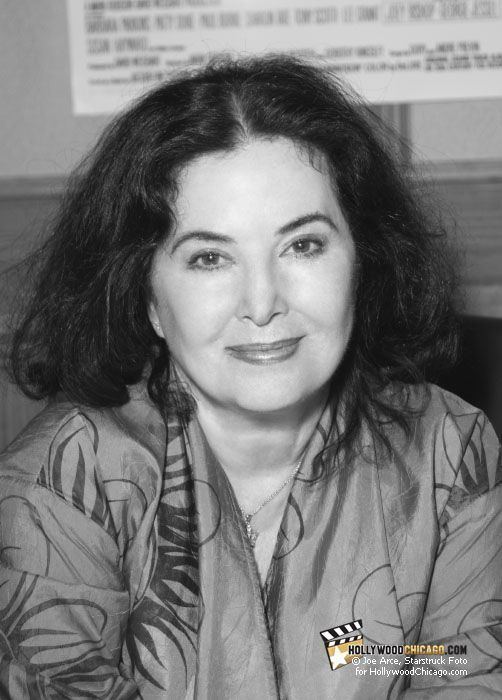 |
| Barbara Parkins as Anne Luther |
 |
| Daniela Vega as Kay Hamilton |
#WomanEmpowermentWednesday Claudette Colbert as Bea Pullman in "Imitation of Life" (1934)
Bea Pullman is a widow and single mother just working as a saleswoman for maple syrup like her husband. But her black housekeeper Delilah (Louise Beavers), also a single mother, has a secret pancake mix that soon puts the both of them as business partners to a restaurant then chain. As the years progress, Bea becomes the ultimate career woman of the '30s although with status, comes a different way she treats Delilah although no less loving for a woman of her time.
#ManCrushMonday 6 Times When Ernst Lubitsch Nailed Life
 |
| Ninotchka (1939) |
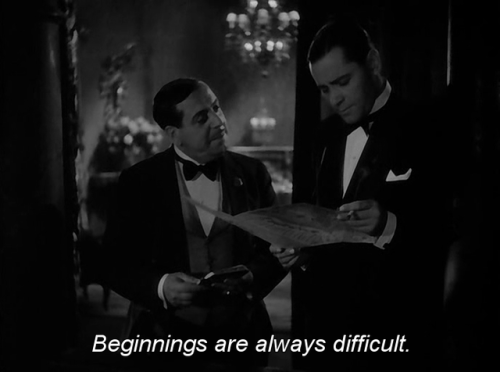 |
| Trouble in Paradise (1932) |
 |
| Design for Living (1933) |
 |
| The Shop Around the Corner (1940) |
 |
| Ninotchka (1939) |
 |
| To Be or Not To Be (1942) |
#WomanEmpowermentWednesday Dorothy Spencer
In 1924, Dorothy Spencer moved from her position at the Consolidated-Aller lab to Fox's editing department. With Barbara McLean, Spencer spent most of the '30s working as apart of Fox's team as a cutter then began working with Otho Lovering. It is with Lovering that gained the both of them an Oscar nomination for "Stagecoach" (1939). In the 1940s, Spencer would go solo and edited two of Hitchcock's films in "Foreign Correspondent" (1940) then "Lifeboat" in 1944. But it was for Ernst Lubitsch which she would edit the most films for including "To Be or Not to Be" (1942). By the 1960s, she had worked on 60 films, gaining two nominations then two more in "Cleopatra" (1963) and "Earthquake" (1974). In 1989, she finally gained an American Cinema Editors Career Achievement Award as well as a Golden Scissors Award for "Earthquake."
#ManCrushMonday #VeteransDayEdition John Sweet in "A Canterbury Tale" (1944)
Life imitated art for John Sweet in Powell and Pressburger's "A Canterbury Tale" (1944). The American army sergeant was serving in the U.K. during WWII when "The Archers" (Michael Powell and Emeric Pressburger) discovered him in their attempts to make a film with relative unknowns. The role of G.I. Bob Johnson fit Sweet like a glove as 1/3 of the pilgrims who find themselves on an emotional then physical journey to Canterbury. Accidentally getting off the wrong stop in the fictional Chillingbourne, Bob finds himself involved in a mystery involving another assaulted female victim of "The Glue Man." He throws himself into the mystery in attempting to forget about his out of contact girlfriend whom he hasn't got a letter from in months. Sweet would end up donating his $2,000 paycheck for the film to the National Association for the Advancement of Colored People.
Saturday, November 3, 2018
Turner Classic Movies Christmas Schedule 2018
 |
| Beyond Tomorrow (1940) |
Saturday, December 1
Christmas Classics
7:00 pm Beyond Tomorrow (1940)
8:45 The Bishop's Wife (1947)
11:00 Crack-Up (1946)
 |
| Holiday Affair (1949) |
Sunday, December 2
Christmas Classics
7:00 pm The Shop Around the Corner (1940)
9:00 Holiday Affair (1949)
 |
| Holiday Inn (1942) |
Saturday, December 8
Christmas Classics
7:00 pm Holiday Inn (1942)
9:00 The Man Who Came to Dinner (1942)
11:00 Too Late for Tears (1949)
 |
| It Happened on Fifth Avenue (1947) |
Sunday, December 9
Christmas Classics
7:00 pm It Happened on Fifth Avenue (1947)
9:15 O. Henry's Full House (1952)
 |
| 3 Godfathers (1949) |
Saturday, December 15
Christmas Classics
7:00 pm Trail of Robin Hood (1950)
8:30 3 Godfathers (1949)
11:00 Talk About a Stranger (1952)
| Meet Me in St. Louis (1944) |
Sunday, December 16
Christmas Classics
7:00 pm Meet Me in St. Louis (1944)
9:00 Little Women (1994)
 |
| Cover-Up (1949) |
Monday, December 17
Christmas Crime
7:00 pm Lady on a Train (1945)
9:00 Lady in the Lake (1947)
11:00 Fitzwilly (1967)
1:00 am Crooks Anonymous (1966)
2:45 Cover-Up (1949)
4:15 Backfire (1950)
| Beware, My Lovely (1952) |
Saturday, December 22
Christmas Classics
7:00 pm Remember the Night (1940)
9:00 Christmas in Connecticut (1945)
11:00 Beware, My Lovely (1952)
12:45 am Period of Adjustment (1962)
2:45 A Carol for Another Christmas (1964)
 |
| All Mine to Give (1957) |
Sunday, December 23
5:00 am Scrooge (1935)
6:30 A Night at the Movies: Merry Christmas (2011)
7:30 Bush Christmas (1947)
9:00 Beware, My Lovely (1952)
10:45 O. Henry's Full House (1952)
1:00 pm Susan Slept Here (1954)
3:00 All Mine To Give (1957)
5:00 Holiday Inn (1942)
 |
| The Holly and the Ivy (1952) |
Christmas Classics
7:00 The Holly and the Ivy (1952)
9:00 A Christmas Carol (1951)
11:00 King of Kings (1927)
1:45 Fanny and Alexander (1982)
 |
| The Great Rupert (1950) |
Monday, December 24
5:00 am Beyond Tomorrow (1940)
6:30 Little Women (1933)
8:30 The Great Rupert (1950)
10:00 Babes in Toyland (1934)
11:30 The Shop Around the Corner (1940)
1:15 pm Holiday Affair (1949)
3:00 Christmas in Connecticut (1945)
5:00 Meet Me in St. Louis (1944)
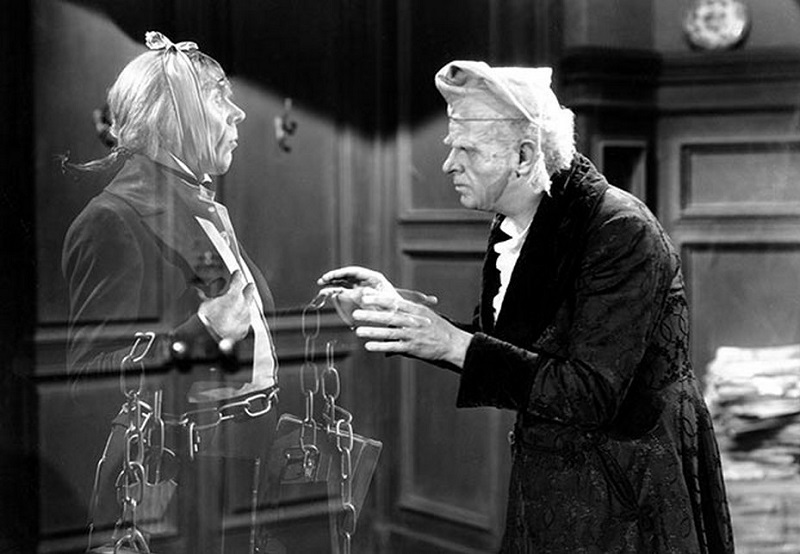 |
| A Christmas Carol (1938) |
Christmas Eve
7:00 The Bishop's Wife (1947)
9:00 A Christmas Carol (1938)
10:30 In the Good Old Summertime (1949)
12:30 am Meet John Doe (1941)
2:45 Desk Set (1957)
Tuesday, December 25
5:00 am Love Finds Andy Hardy (1938)
7:00 3 Godfathers (1949)
9:00 Bundle of Joy (1956)
11:00 Bachelor Mother (1939)
12:30 Fitzwilly (1967)
2:30 The Man Who Came to Dinner (1942)
4:45 It Happened on Fifth Avenue (1947)
6 More of the Best Dressed Dresses
Bette Davis in Walter Plunkett in "Of Human Bondage" (1946)
|
 |
| Rita Hayworth in "Cover Girl" (1944) |
 |
| Fay Wray in "Doctor X" (1932) |
  |
| Rita Hayworth in Jean Louis/Marcel Vertes in "Tonight and Every Night" (1945) |
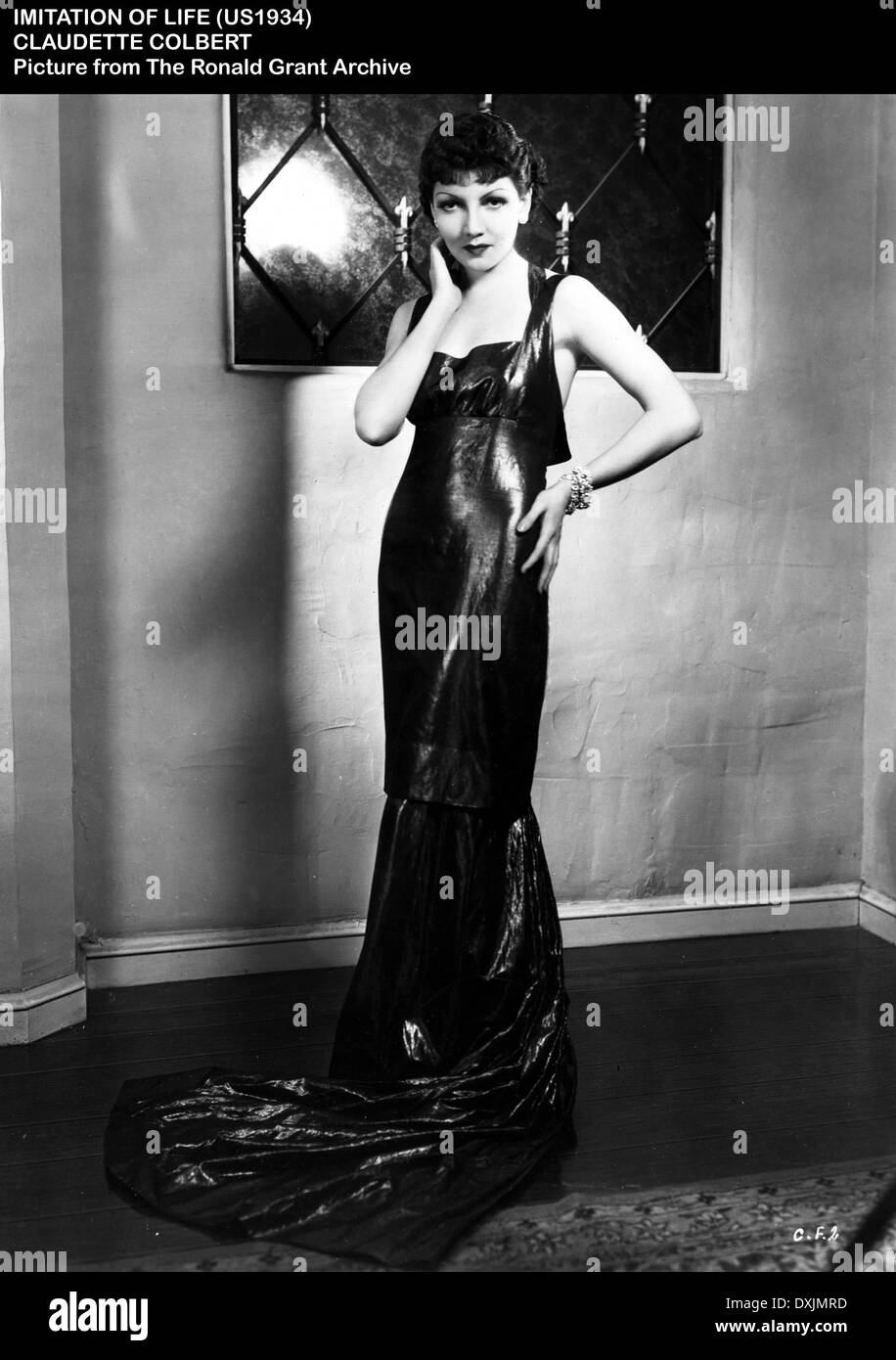 |
| Claudette Colbert in Travis Banton in "Imitation of Life" (1934) |
| Rita Hayworth in Jean Louis in "Affair in Trinidad" (1952) |
Wednesday, October 31, 2018
Tuesday, October 30, 2018
#TCM Movie: House on Haunted Hill (1959)
"Mr. Price, fate has brought us together this rainy night. I'm starting a picture in a few weeks -- The House on Haunted Hill -- it's a ghost story." (Castle. Step Right Up!: ...I'm Gonna Scare the Pants Off Of America) From that point on, Vincent Price was sold during this chance encounter at the diner near the Goldwyn Studio with director William Castle. In playing Frederick Loren, Price would receive a two picture deal along with "The Tingler" (1959).
"House on Haunted Hill" was mostly shot at Allied Artists, but exteriors were shot at Frank Lloyd Wright's Ennis House on Los Feliz. Robb White explains that the home was "built during his Egyptian period. We were not allowed in there, but the guy who owned it let us look inside. And it was a weird house - the ceilings were 22 feet high! In one room there was a closet door that was 22 feet high and two feet wide with nothing in closet to hold up clothes or anything else. The man who owned the house had furnished only one of the many rooms with a bed, a chair, a nightstand and, in the kitchen, a card table. He complained that the famous glass walls, which joined each other at the corner with only edges of the glass panes meeting, leaked when it rained and made a weird screaming noise when the wind blew. And there was nothing you could do about it! The swimming pool was three feet deep; ten feet wide; a hundred feet long; and in the middle was a statue of a horse! It was just god-damned ridiculous!" (Weaver. Science Fiction Stars and Horror Heroes)
It wouldn't be a William Castle film without a gimmick, and the gimmick in this film involved something called "Emergo." Vincent Price remembers and explains the effect on "the opening night [...] I was in a little theatre in Baltimore. In the movie, I reeled this skeleton in using a winch, and then there'd be a real skeleton in the theatre that would shoot over the audience. Well, I was in this theatre with a great many young people in it - and they panicked! and they knocked all the seats out of the theatre!" (Weaver. Attack of the Monster Movie Makers)
"House on Haunted Hill" will be on TCM October 31st, 1:00 AM EST/12 AM CST
Friday, October 26, 2018
Wednesday, October 24, 2018
#WomanEmpowermentWednesday #MemorableSupportingActors Maria Ouspenskaya
Before appearing on the screen as Maleva the Gypsy Fortuneteller in "The Wolf Man" (1941) and "Frankenstein Meets the Wolf Man" (1943), Maria Ouspenskaya already had a storied career. Ouspenskaya was born in Tula, Russia and had studied acting and singing in Moscow and Poland, respectively. It was in Moscow that she had became one of the founding members of the First Studio, the theater subset of the Moscow Art Theater where she studied under Konstantin Stanislavsky. Ouspenskaya would end up training actors at the American Laboratory Theatre in New York City and schools she herself co-founded such as the School of Dramatic Arts in New York and the Maria Ouspenskaya School of Dance in Los Angeles.
Ouspenskaya had dabbled in film in Russia, having made some silents from 1915-1929. To keep the School of Dramatic Arts open, she began to make movies for Hollywood. Her first film "Dodsworth" (1936) immediately earned her an Academy nomination playing Gregory Gaye's mother. Although with a heavy accent and superior attitude with a heavy pension for astrology, Ouspenskaya was not an easy woman to work with but had worked consecutively up until her best known role and even afterwards.
But Ouspenskaya's best contribution to Hollywood is training many actors and actresses in the Stanislavsky Method including Anne Baxter, John Garfield, and the acting teacher who would epitomize what would become The Method, Lee Strasberg. She taught Walt Disney model (best known for dancing for "Snow White") Marge Champion. Ouspenskaya died after having suffered from a stroke and allegedly severe cigarette burns having fallen asleep while smoking a cigarette.



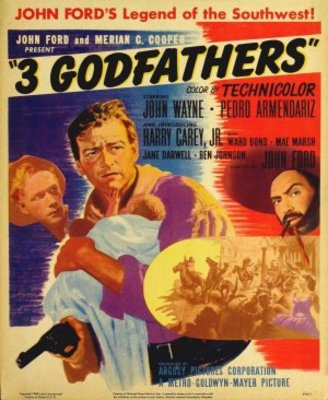


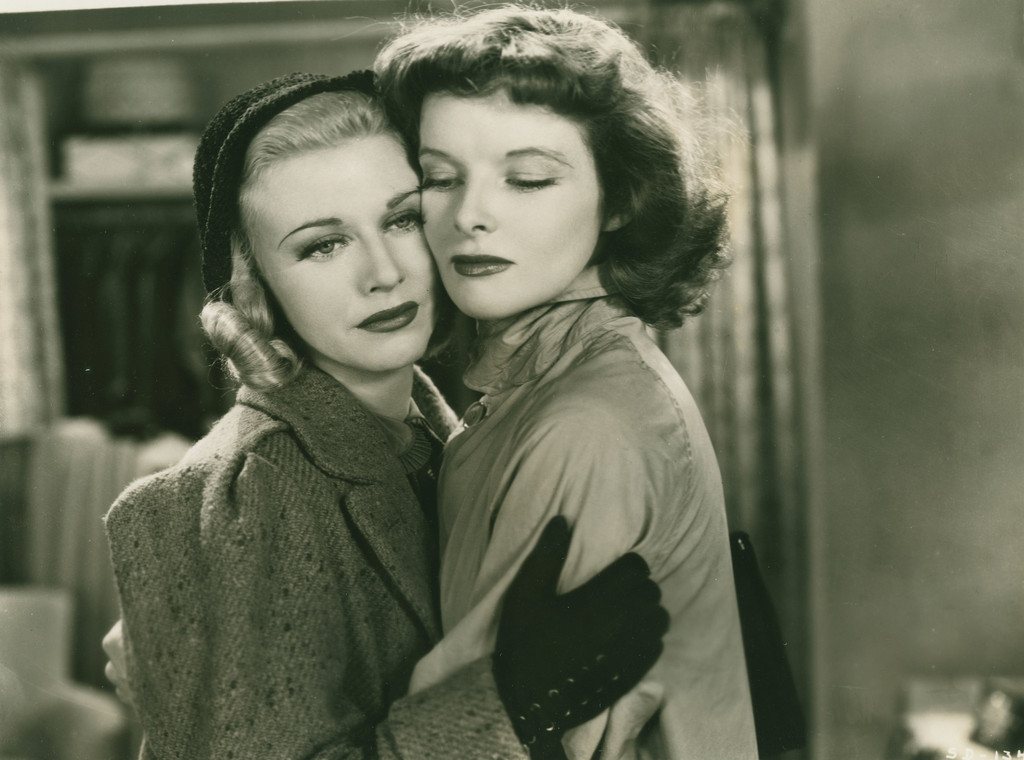


.jpg)

